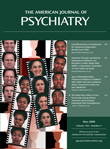Science and art can mix. That synergy can create clinical care that is both excellent and deeply instructive, as Lenore Terr demonstrates in this wise, humane, and scientific book.
Dr. Terr is well known as a good writer and an expert on children’s reactions to trauma. She is also clearly a caring, disciplined, prepared, tough, playful, and imaginative biopsychosocial clinician. With help from many pithy vignettes from colleagues, she has written a new book that is a great gift to clinicians in child psychiatry and all related fields.
Sometimes particularly valuable and lasting contributions to psychiatry get taught one-on-one or appear in books rather than (or better than) in journals or online. I believe Magical Moments is a case in point, though its central report of a long-term child psychiatry case study has partly appeared in the Journal of the American Academy of Child and Adolescent Psychiatry (1) . In this era—when clinicians have to deal with too much to read; biological optimism, exuberance, and reductionism; imaging and genetics; wobbly and often shallow statistics and behaviorism; wayward insurers; and huge pressure to medicate symptoms rather than to treat the whole child— excellent integrated child psychotherapy and psychiatric care is at risk, probably rather rare, and for various reasons not often written about in journals.
Magical Moments is a breath of good air. Its structure is a bit odd but not difficult; it contains small essays and frequent sensible phrases, labels, and summaries on some essences of child psychiatry (e.g., how to prepare oneself and the setting to be therapeutic or how to trust one’s playfulness). It contains effective and sometimes surprising neatly described vignettes from 33 distinguished colleagues, usually with commentary from the contributing author and Dr. Terr on what was done and how one might understand it (sometimes there is also a useful bit of follow-up from many years later). It contains some notes on Dr. Terr herself as a clinician and a person. In addition, as a sort of structural backbone of the book, it contains many pieces of Dr. Terr’s diagnostic and therapeutic work with her deservedly well-known patient Cammie, a devastatingly traumatized child Dr. Terr has treated (usually once a month, because of distance) for about 15 years, starting when Cammie was 2 years old.
Cammie was drastically sicker than most of the varied and more ordinary children discussed in the book’s vignettes. As described evocatively by Dr. Terr, Cammie arrived as a wild 2-year-old girl, who others thought was perhaps extremely mentally retarded or autistic; she growled in a startling voice, spat, sniffed sex organs, hissed, hit, and promptly enucleated the glass eye from a stoneware cat in Dr. Terr’s office. It turned out that before Cammie was 13 months old, her parents had murdered her 3-week-old sister by shaking and biting her; bite marks on the infant were determined to be adult and of both sexes. Cammie too had been bitten all over, shaken, and sexually abused. Could anyone reach Cammie? Could anyone help? Dr. Terr did and describes some of what she did in ways that test and demonstrate a cornucopia of usual, unusual, and magical moments of patient and tenacious child psychiatry.
Magical moments are, as Dr. Terr knows, rather rare. Clinicians often wish they were more regularly possible and young clinicians often expect them to be present every day. But rare or common, let us look at them carefully and learn from them (2). Several of the magical moments described in the book involve Cammie, but most deal with far more ordinary child psychiatric patients and problems. The doctors in the varied vignettes allow themselves to be in turn spontaneous, playful, honest, expressive of feeling, and realistic and to acknowledge their limits and even potential loss of dignity in connecting and responding and trying to help a child to change. Examples include a bowel movement interchange and a ride in a car; both may strike some colleagues as amusing and risky, but they were, as it turned out, in touch with the child and useful for healing. Verbal brevity can help magical moments, as in one comment from a therapist whose adolescent male patient was being bribed away from therapy by a parent’s offer of a sports car: “I can’t beat that.” Listening to the child is essential. Being willing and able to be there with the child is also essential.
Dr. Terr’s use of some relevant psychiatric literature is sensible. She now and then refers to an aptly brief list of child and adult clinicians and theoreticians, such as Selma Fraiberg, Donald Winnicott, Daniel Stern, Saul Harrison, Ethel Person, and Sigmund and Anna Freud, and even to Malcolm Gladwell’s recent nonclinical book on change, Blink . She briefly discusses roles for cognitive-behavioral therapy (CBT) and medication, but also limitations for both. Although this book is not specifically about trauma and recovery, magical therapeutic moments often have much to do with trauma and recovery, and there is much to be said for careful study of not just brief events that hurt but also brief events that help. Dr. Terr weaves into the book her general and widely useful scheme of “abreaction, finding context, and correction” and uses that scheme to buttress the clinical vignettes of change that give the book its special richness.
I think some of the vignettes and clinical thoughtfulness in Magical Moments are much needed and will be of lasting use to child psychiatry. I hope all child psychiatrists, and also child psychologists and social workers and students in those disciplines, will read the book. It is a memorable book.

